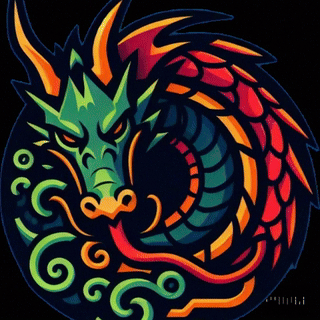Part 1: Birth of the Gods – Chaos, Creation, and Cosmic Order
Long before the first pyramid touched the sky, before a single grain of Nile silt birthed green life from the desert, there was nothing. And when I say nothing, I mean absolutely nothing. No sky. No earth. No gods. Just an infinite, formless dark soup called Nu (sometimes spelled Nun). It wasn’t evil. It wasn’t good. It just was. Silent. Still. Endless.
But as with all good stories, something had to stir eventually. Out of this nothingness, a spark of will, of life, rose—Atum. The first god. He didn’t have parents. No birth story. He simply willed himself into existence. Imagine that level of confidence. Atum is sometimes blended or linked with Ra, the sun god, but at this point, he was just... the beginning.
Now, Atum was floating in the watery chaos of Nu, completely alone. And like anyone stuck in the void for too long, he got lonely. So, he did what all self-starting deities do: he created life. But not with tools or magic wands—nope. The myths say he either sneezed or, um... did something a little more personal with his own body to produce the first divine pair: Shu (god of air) and Tefnut (goddess of moisture).
This awkward divine act of creation gave birth to two essential forces: air and moisture—breath and water. Pretty clever, right? These two would be the foundations of everything else. With them came separation, and from separation came space—space for the universe to grow.
But wait, it gets better.
Shu and Tefnut, loving children that they were, had kids too: Geb (the earth god) and Nut (the sky goddess). And here’s where Egyptian mythology gets visual and beautiful. Nut, the sky, is usually depicted as a long, dark, star-speckled goddess arching her body over Geb, the earth, who lies beneath her. Shu, the air, stands between them, holding them apart. Because, believe it or not, they were madly in love and didn’t want to be separated. But the universe needed order, and that meant space between earth and sky. Shu had to be the tough dad holding them apart for the good of creation.
So now we’ve got a world—air, sky, land, water. The gods are rolling in. But here’s where drama enters the chat.
Nut and Geb, still close despite the divine restraining order, had children—five of them, actually. And these five were the rockstars of Egyptian mythology: Osiris, Isis, Set, Nephthys, and sometimes Horus the Elder. (Don’t mix him up with the later Horus we’ll meet in Set’s drama.)
Each of these new gods represented key elements of life and death, love and betrayal, chaos and magic. Their stories are the backbone of Egyptian mythology—and trust me, they don’t disappoint.
Now, let’s talk about Ma’at for a second. Ma’at wasn’t a god in the way the others were—she was more of a concept, a force, a principle. But oh man, was she important. Ma’at was order. Balance. Truth. Justice. She was the opposite of chaos, and every single god and human had a duty to uphold her. The world, as Egyptians saw it, was always teetering on the edge of falling back into Nu, into chaos. Ma’at kept it upright.
Pharaohs ruled because they upheld Ma’at. Without her? The sun wouldn’t rise. The Nile wouldn’t flood. Crops wouldn’t grow. She was that vital. Even the gods bowed to Ma’at’s importance.
Back to Atum—he wasn’t done after the first family. Some versions of the myth say that once the Ennead (the original nine gods) were around, Atum-Ra (he eventually merges with Ra, the sun god) took on a higher role—rising each day in his solar boat to push back darkness and chaos, traveling across the sky by day, and through the underworld by night. Every night, Ra would face Apophis, the great serpent of chaos, in battle. And every morning, his victory meant the sun rose again. Epic, right?
What’s cool is how the Egyptians viewed all this mythological chaos as more than just stories. To them, these weren’t just divine soap operas—they were explanations for everything. Why the sun moved. Why the Nile flooded. Why death and rebirth mattered. Even simple things like wind blowing through the reeds? That was Shu breathing. Ra's journey wasn't just in the sky—it was happening inside every living cycle.
And honestly, they weren’t wrong to see the world that way. Everything was connected. The gods were nature, and nature was the gods. You didn’t just live with the gods—you lived through them. Every breath, every heartbeat, every sunrise—it was all divine.
So next time you see a desert sunrise or feel the wind across your face, maybe pause for a second and imagine that somewhere, in a boat sailing across the sky, Ra is still out there, beating back the darkness so the world can keep turning.
And that, my friend, is how it all began—from silence and darkness to a world filled with gods, order, and epic stories still echoing through the pyramids and temples of ancient Egypt.
480-366-3550 (Domain Sales)
© SDBEST LLC, 2025. All rights reserved.
Sponsorship Disclosure
Terms of Service
